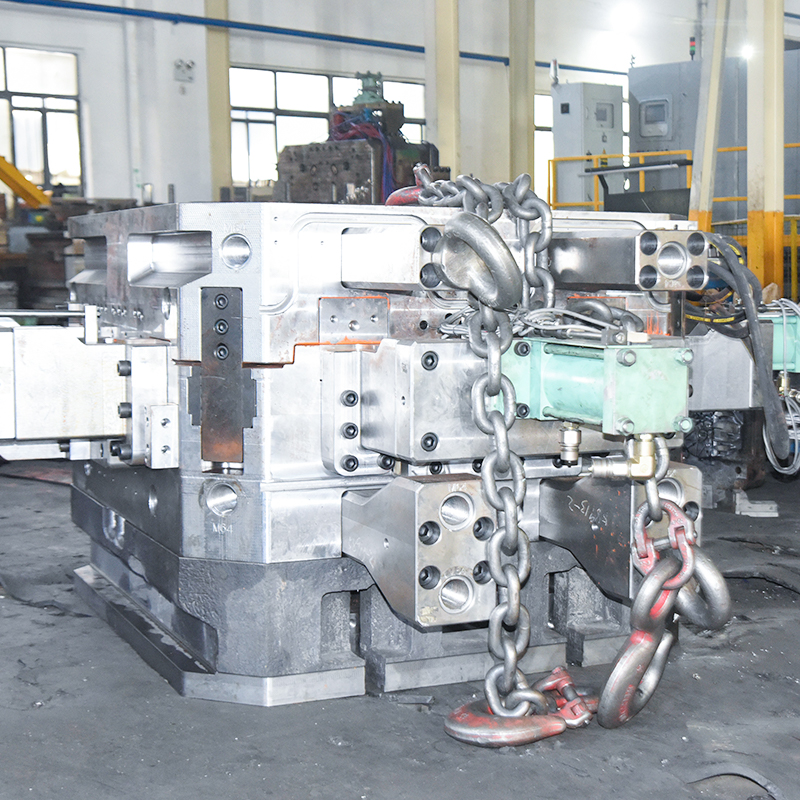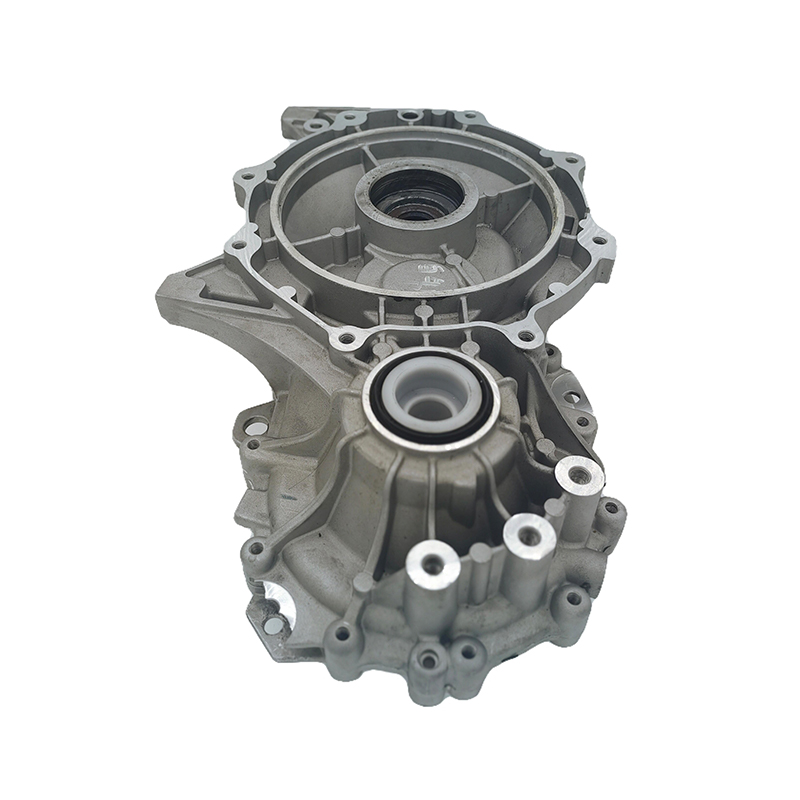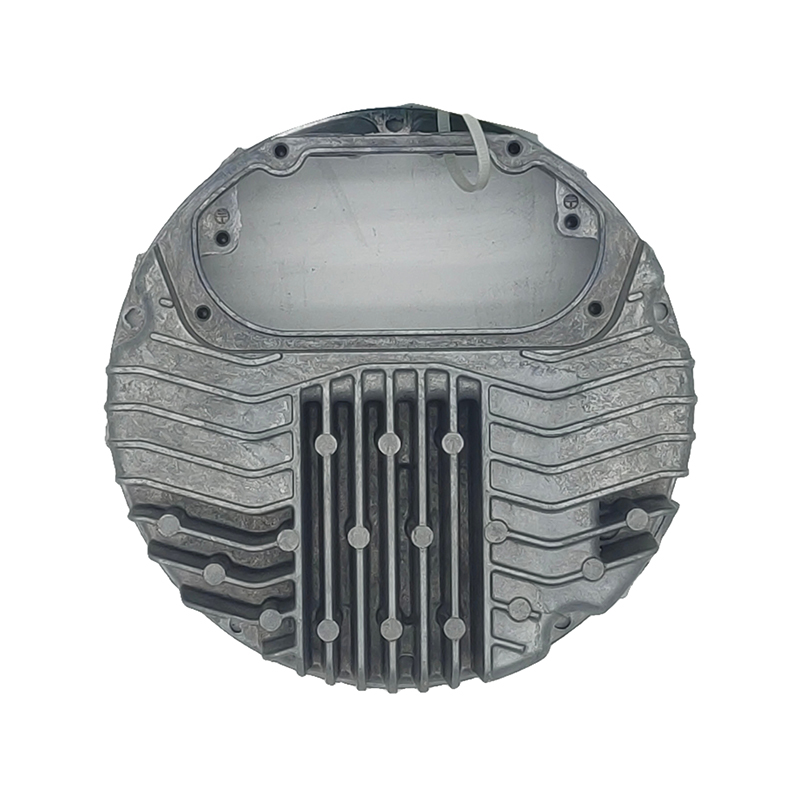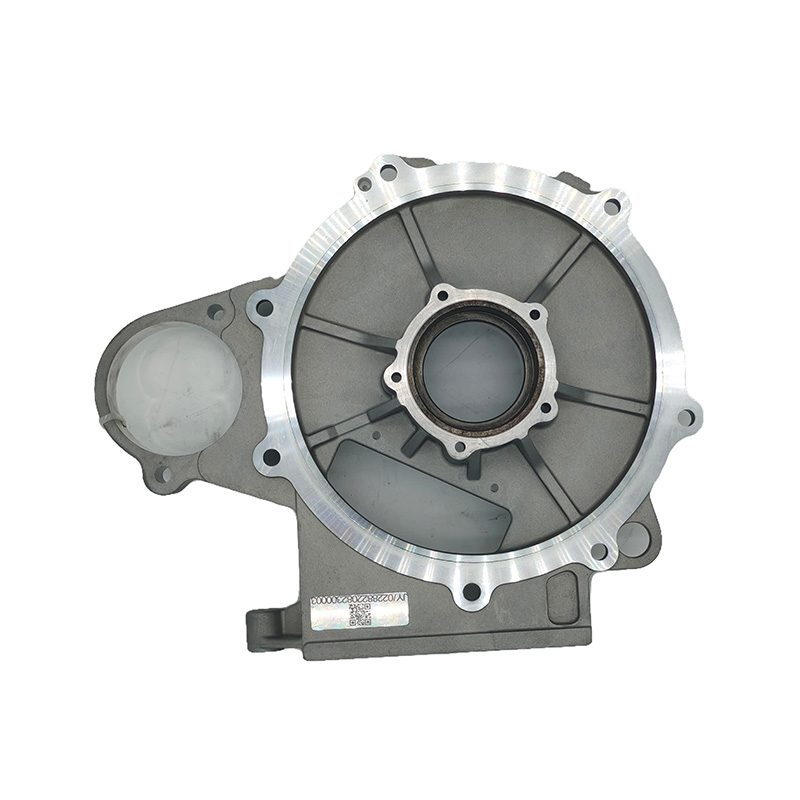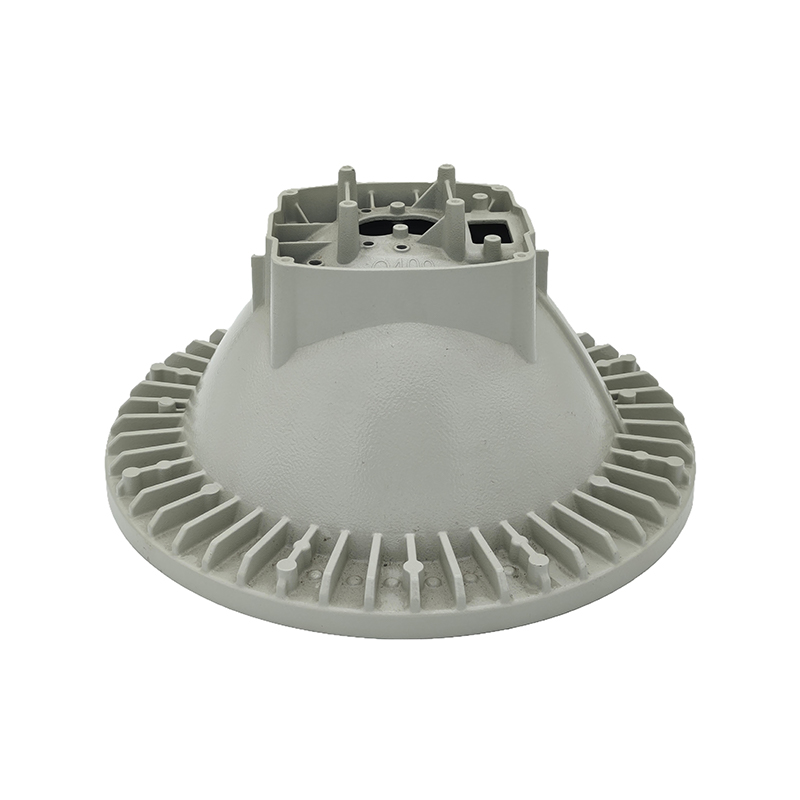1. Enhanced Durability and Strength
Lighting die castings are renowned for their outstanding durability and robust strength. The materials commonly used in the die-casting process, such as aluminum and zinc, possess inherent properties that make them ideal for producing high-performance lighting fixtures. This durability is essential in ensuring the longevity of lighting products, which are often exposed to harsh conditions.
Metal Properties
Die castings are typically made from aluminum or zinc alloys, both of which are well known for their strength and corrosion resistance. Aluminum, in particular, is highly resistant to rust and degradation caused by environmental factors such as moisture, extreme temperatures, and UV rays. This makes it perfect for outdoor lighting applications, where fixtures are exposed to rain, snow, and sun. Zinc, on the other hand, is known for its high strength-to-weight ratio, making it ideal for compact yet durable designs. Together, these materials help create fixtures that endure years of exposure without compromising functionality or aesthetic quality.
Impact Resistance
One of the standout benefits of using die-cast metals in lighting fixtures is their impact resistance. These materials can withstand heavy blows or accidental impacts without cracking, breaking, or becoming deformed. This feature is crucial for lighting systems installed in public spaces, industrial areas, or outdoor environments, where there is a higher likelihood of physical interference.
Longevity in Harsh Environments
Die-cast aluminum, for instance, does not corrode or degrade easily, even when exposed to saltwater or acidic conditions, making it the material of choice for marine environments. Similarly, die-cast components in industrial and warehouse lighting can handle the stress of high-traffic environments where frequent contact with machinery or equipment could otherwise cause damage.
2. Precision and Complex Shapes
The die-casting process is one of the few manufacturing methods that can produce intricate and precise designs at scale. This precision is particularly important in modern lighting designs, where form is often as important as function. Designers are looking for ways to incorporate detailed and complex shapes that can match contemporary architectural trends.
How Die-Casting Creates Precision
The process of die-casting involves injecting molten metal into a mold under high pressure, which results in a highly accurate reproduction of the mold’s design. This allows for tight tolerances, making it possible to create detailed geometries that would be challenging or impossible with other manufacturing techniques. The use of die-castings ensures that each lighting fixture has the same level of precision, contributing to a consistent, high-quality end product.
Creative Design Freedom
Die casting allows lighting designers to explore creative freedom by designing complex geometries and forms that wouldn’t be feasible with other methods like stamping or extrusion. For example, modern pendant lights or wall sconces can feature intricate, organic shapes, while retaining the structural integrity necessary for functionality.
Streamlined Manufacturing
Since the die-casting process allows for such precision, there is minimal need for secondary operations (like machining or finishing) after the casting is done. This reduces the overall production cost and time, ensuring that high-quality, complex designs can be produced in large quantities with little variation.
3. Improved Heat Dissipation
In modern lighting systems, particularly those using LED technology, managing the heat produced is essential to maximize performance and extend the lifespan of the light. One of the standout advantages of lighting die castings is their ability to dissipate heat effectively, which helps maintain the efficiency of the lighting system.
Why Heat Management Matters
LED lights, while more energy-efficient than traditional incandescent bulbs, still produce some level of heat. If this heat isn’t efficiently managed, it can cause the LEDs to degrade prematurely, reducing their lifetime and performance. This is especially important for high-power LED systems used in street lighting or architectural lighting, where thermal management is critical for optimal operation.
Aluminum’s Thermal Conductivity
Aluminum, one of the most commonly used metals in die-casting for lighting fixtures, has excellent thermal conductivity properties. It can efficiently transfer heat away from the LED components, preventing them from overheating. The fin structure in die-cast aluminum fixtures, for example, can be designed to further increase the surface area, allowing for greater heat dissipation.
Longer Lifespan and Consistent Performance
By managing heat effectively, die-cast lighting fixtures help to maintain consistent brightness levels over time and prevent color shifts that can occur when LEDs overheat. This not only extends the life of the light source but also contributes to lower maintenance costs and fewer replacements, making it a more cost-effective solution in the long run.
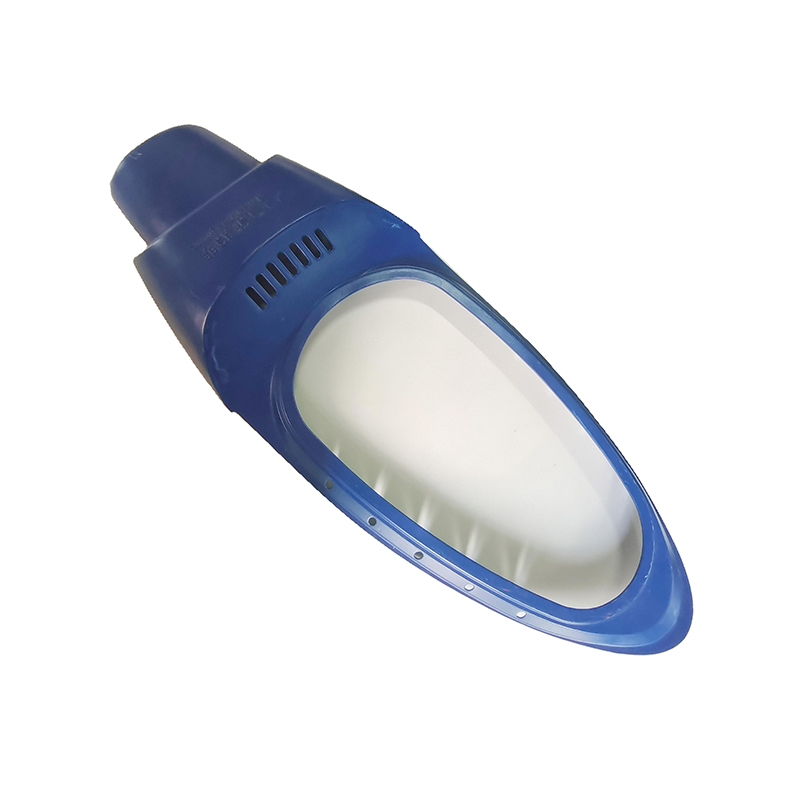
4. Cost-Effective Manufacturing
The die-casting process, despite requiring an upfront investment in molds and equipment, becomes highly cost-effective for large-scale production. For manufacturers, this means they can produce large quantities of high-quality lighting fixtures at a competitive price point.
Low-Cost Mass Production
Once the molds for a lighting fixture design are created, the cost per unit decreases significantly with each additional unit produced. The ability to create identical fixtures with minimal variation makes die-casting an ideal choice for high-volume production. This is particularly advantageous for manufacturers looking to produce lighting fixtures for mass-market applications, such as residential or commercial buildings.
Reduced Labor and Material Costs
Die-casting also minimizes waste and material costs. Since the metal is injected into the mold with high precision, little material is lost in the process, reducing the overall cost of raw materials. Moreover, automated die-casting machines reduce the need for extensive labor, lowering production costs.
5. Aesthetic Versatility
Modern lighting designs are often defined by their aesthetic appeal. Lighting die castings provide designers with a wide range of options to achieve the desired visual effects for their products. From industrial-style to luxury finishes, die-castings offer the flexibility needed for diverse interior and exterior lighting styles.
Finishing Options for Die-Cast Fixtures
Die-cast components can be finished in a variety of ways to enhance the visual appeal of lighting products. Common finishing techniques include anodizing, powder coating, and painting, each of which offers different textures, colors, and surface finishes. Anodizing creates a durable, corrosion-resistant finish that adds a metallic sheen, while powder coating allows for a wider range of colors and a more uniform finish.
Compatibility with Various Design Styles
Lighting die castings can complement any style, from minimalistic to ornate. Designers can create sleek, modern lighting fixtures with smooth surfaces or add texture and pattern to achieve an artisanal look. The color options available further enhance the design, enabling the fixture to blend seamlessly with various architectural elements.
Customizable Features
In addition to standard finishes, die-castings can be customized with brand logos, custom patterns, or unique shapes. This ability to tailor the design to meet specific needs or preferences makes die-cast lighting an appealing choice for both high-end residential and commercial projects.
6. Sustainability and Eco-Friendliness
In an era where sustainability is becoming a key priority in design, lighting die castings offer several eco-friendly advantages. Both aluminum and zinc are highly recyclable, making them an attractive option for manufacturers who want to reduce their environmental footprint.
Recycling Benefits
One of the most significant benefits of die-casting materials is that they are 100% recyclable. Once a lighting fixture reaches the end of its life, the metal can be melted down and reused in the production of new fixtures. This process reduces the need for virgin raw materials and conserves natural resources, contributing to environmental sustainability.
Lower Carbon Footprint
The recyclability of die-cast materials also leads to a lower carbon footprint compared to other manufacturing processes. By using recycled metals, manufacturers can reduce the energy required for extraction and processing, thus decreasing the overall environmental impact.
Supporting Green Building Standards
Die-cast lighting fixtures can also help support green building standards such as LEED (Leadership in Energy and Environmental Design). By using sustainable materials and offering energy-efficient lighting solutions (e.g., LED systems), these fixtures contribute to a building’s overall sustainability performance.
7. Customization and Branding
For designers and manufacturers looking to create unique lighting fixtures, die casting offers an exceptional level of customization. This flexibility allows them to incorporate distinctive branding elements, setting their products apart in a competitive market.
Tailoring Fixtures to Specific Needs
The die-casting process can easily accommodate unique designs, whether it’s for a one-off custom lighting project or a limited-edition product. This ability to customize the shape, size, and finish makes die-cast lighting highly adaptable for various applications, from residential projects to large-scale commercial installations.
Incorporating Logos and Branding
Manufacturers can integrate their logo or branding directly into the die-cast design, creating a cohesive look that reflects their company’s identity. This is particularly useful for businesses looking to promote their brand through distinctive lighting fixtures in both residential and commercial environments.
8. Consistency and Quality Control
One of the most significant benefits of using the die-casting process for lighting fixtures is the consistency it provides in terms of quality and performance. Since each die-cast component is produced using a highly controlled process, manufacturers can ensure that every lighting fixture meets the required standards and specifications.
High Standards for Manufacturing
Die-casting allows for the production of fixtures that meet precise tolerances with minimal deviations, ensuring that each unit is virtually identical. This level of precision leads to a more uniform appearance and ensures that the structural integrity of each fixture is maintained throughout its lifespan.
Minimizing Defects
Thanks to the precision and efficiency of the die-casting process, there is less chance for defects or inconsistencies in the final product. This reduces the likelihood of quality issues and minimizes the need for extensive inspections or rework. As a result, manufacturers can achieve high-quality, cost-effective production while maintaining high standards.
9. Support for Advanced Lighting Technologies
As smart lighting and other advanced technologies continue to evolve, die-casting offers an excellent foundation for integrating these innovations into lighting fixtures.
Housing for Electronics and Sensors
Many modern lighting fixtures require space to house electronics, sensors, and communication devices like Bluetooth or Wi-Fi modules. Die-casting provides a strong, heat-resistant enclosure that can house these components without compromising the design or functionality of the fixture. This makes it possible to integrate smart lighting technologies into a wide range of designs.
Customization for High-Tech Features
Die-casting also allows manufacturers to create custom enclosures for more complex lighting systems, ensuring that all components fit securely and safely within the fixture. This flexibility is essential as lighting systems become more advanced and interactive.
10. Global Market Demand
As demand for high-quality, innovative lighting products continues to rise globally, die-cast lighting fixtures are well-positioned to meet the needs of a diverse and growing market.
Adapting to Market Trends
Lighting die-casting offers manufacturers a competitive advantage in meeting the diverse needs of global markets. Whether it’s urban development, commercial lighting, or luxury residential projects, die-casting provides the flexibility to create products that align with regional preferences and specific architectural styles.
Global Reach and Scalability
Die-casting also supports scalable production, making it easier for manufacturers to meet demand in different parts of the world. With consistent quality and faster production times, manufacturers can cater to a global customer base, ensuring their products reach markets in North America, Europe, and Asia efficiently.

 English
English Español
Español Deutsch
Deutsch русский
русский